Master Baking Class with @ albertocotua ( Weekly Series) Issue no 10 Focaccia How to :
Hello Steemers! Today I bring you an incredible recipe of Focaccia with Poolish and Mother Yeast, as always, I will show you the step to this long process that took me 17 hours of work. Let's start with a little history about Focaccia.
Focaccia.
The focaccia is a recognized dish typical of Italian cuisine, but it is believed that the focaccia comes from the ancient Etruscans or the ancient Greeks.
It is linked to the town of Recco - Genova, in the sixteenth century the inhabitants of this area were attacked by Saracen pirates, who besieged the town. The population took refuge in the mountains with what is necessary to survive wheat flour, water, oil and salt. The final addition is given by the herbs with which the dough is sprinkled before cooking. In the past, the Romans achieved a similar effect by cooking the focaccias on bay leaves.
As I had told you that this Focaccia carried Poolish and Mother Yeast, we began to explain what to do and what happens in these processes.
What is the Poolish?
The word Poolish is of Polish origin, it consists of a liquid mass made from an equal proportion of flour, water and very little yeast. This method was introduced in France by bakers at the beginning of the 19th century. The o The Poolish is a leavening mother dough that is left to ferment between 8 and 12 hours with a controlled temperature of 26-27 ° C. Thanks to this extensive fermentation with very little yeast that allows the development of lactic acid and possibly wild yeast , for this reason the Poolish is an excellent choice to mix the MMN in a bread like this one of high hydration.
These are the calculations, with their measurements to make a Poolish for 2 Focaccias of 500 gr each loaves.

Mise en Place Poolish.
As we read in the technical sheet, we only have four ingredients:
- Flour 267 grams
- Water 267 grams
- Yeast 6 grams if it is fresh (3 if it is instant)
- MMNL (Mother Yeast) 91 grams
We mix everything and let it rest for 10 hours, I leave it for 10 hours and not 12 because the climate in my house is very warm 28 ° -29 ° C approximately.
The next morning we observe on the edge of the Bowl the growth of our Poolish and we have a look at how the active Poolish is.
It is important to emphasize that I made this focaccia on August 21, the day of the tremor here in my city and just while I was in the oven the earthquake started.
Mise in Place Focaccia. </ center>
We will know what the exact measurements are, with our technical sheet.
Personally I do not like the taste of olive oil, so this formula designed by me contains Margarine instead of Olive oil, if you like it you can add the same amount and in the same order.

If you noticed, this technical sheet is different from the previous ones. In this show the% and the remaining grams of the preparation, that is, remember that the poolish is part of the final mass, so this amount of flour, water and yeast are the remaining of the final mass.
This is the technical sheet with all the total ingredients.

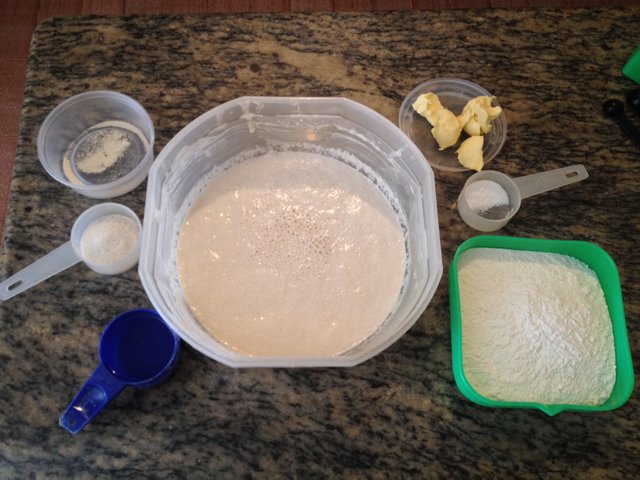
First we add the water that acts as a refresher, softening the acidity of the Poolish.
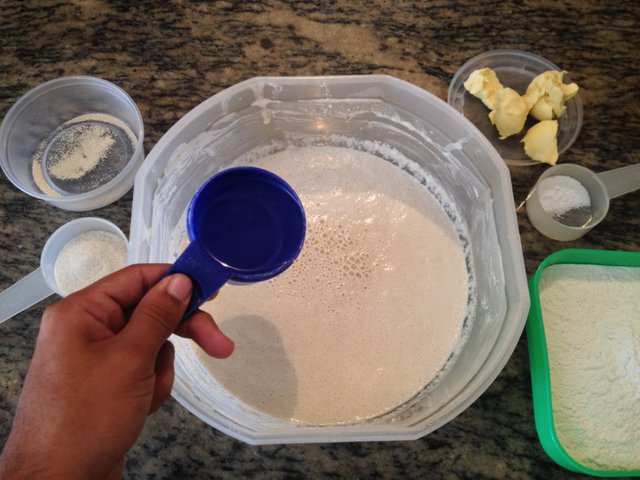
Then add the flour and the remaining dry ingredients, except the yeast and margarine.
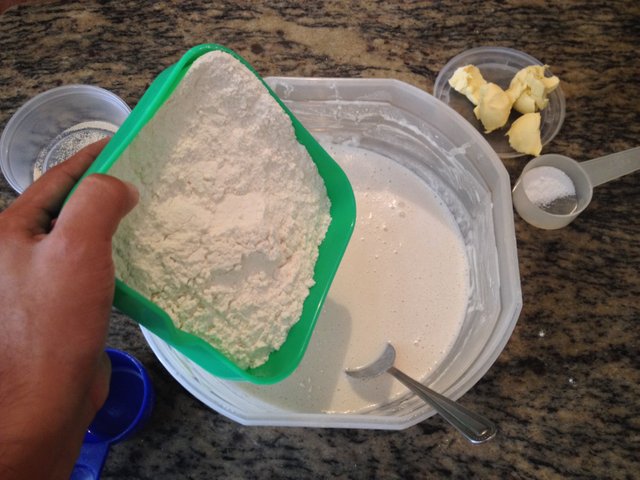
We have a very wet dough, so we do not knead conventionally as we have been doing, we will use a special kneading.
This kneading consists of taking the dough from the bottom of the container, stretching it and placing it on itself, repeat this step in the form of the 4 cardinal points, that is, starting at the north of the container and ending at the west, then cooling.
It is important to remember that for each kneading we must spread the margarine in our hands and thus add it indirectly to the mixture.
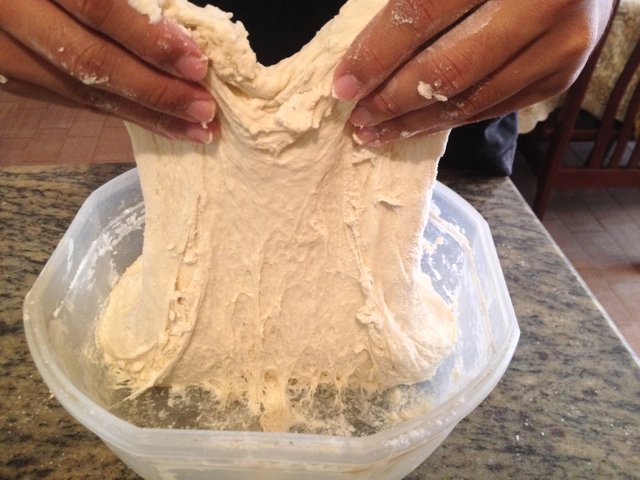
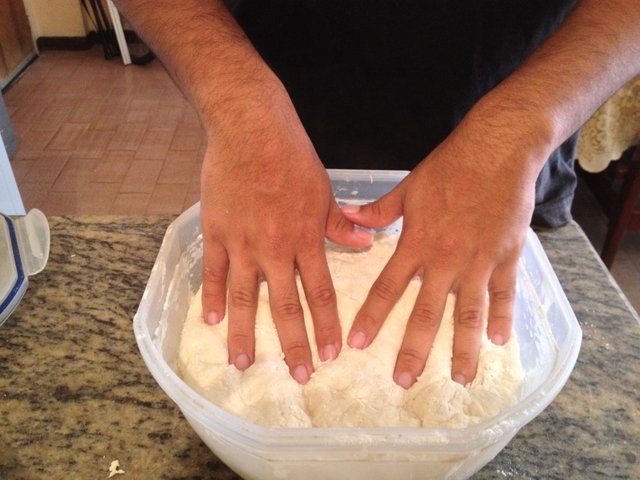
After 3 hours, degasify and continue kneading, this time with the dough a little more uniform (since it has generated structure) in the well-floured counter.
We repeat this process every hour.
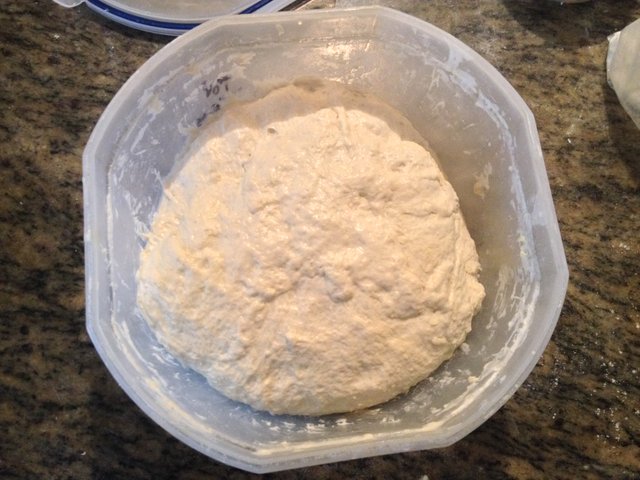
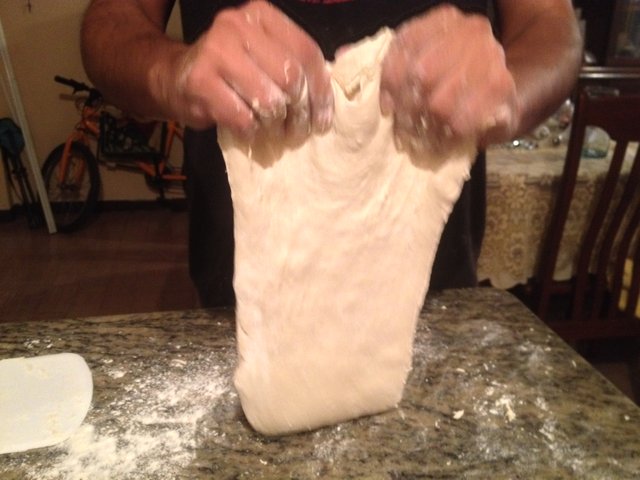
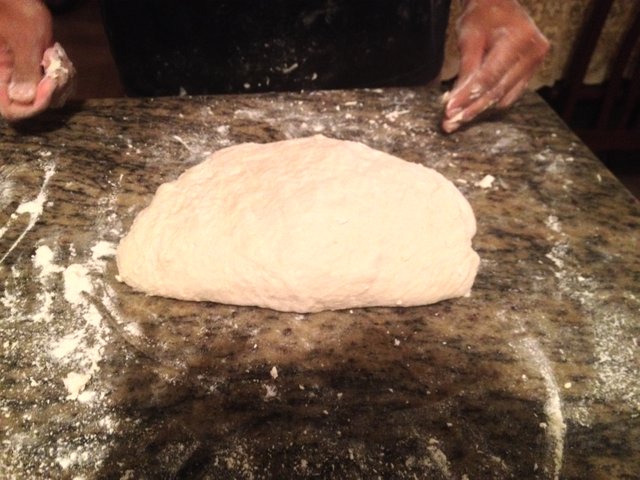
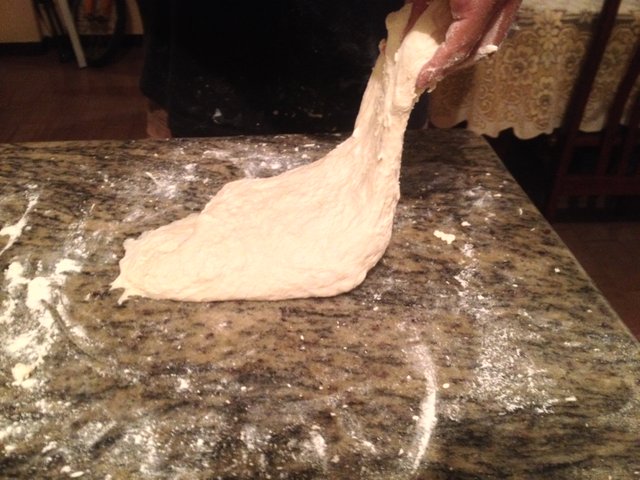
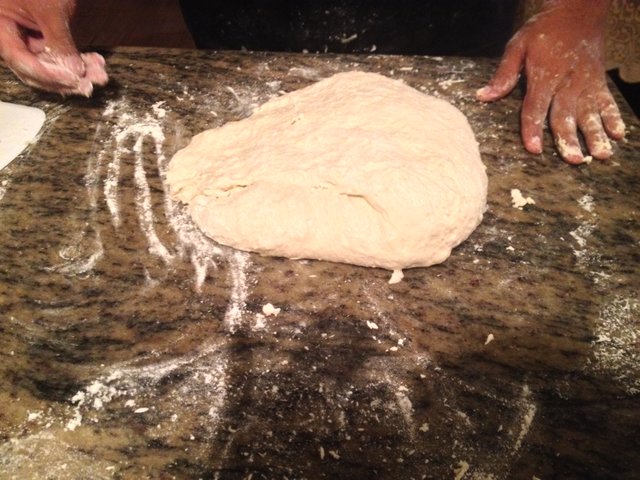
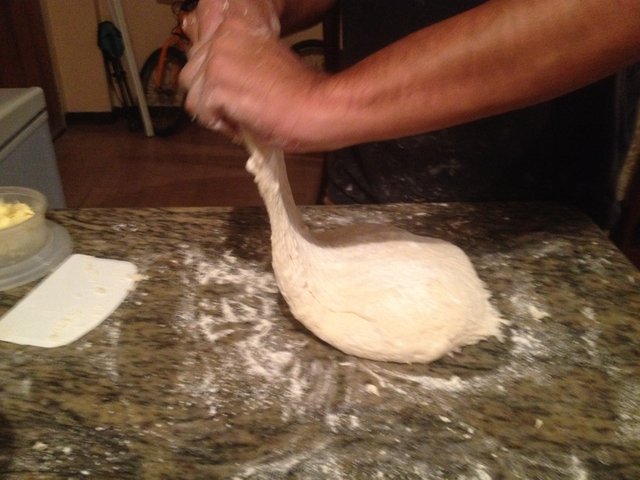
When we have a uniform dough, we separate and continue kneading in another way so that it generates the necessary gluten.
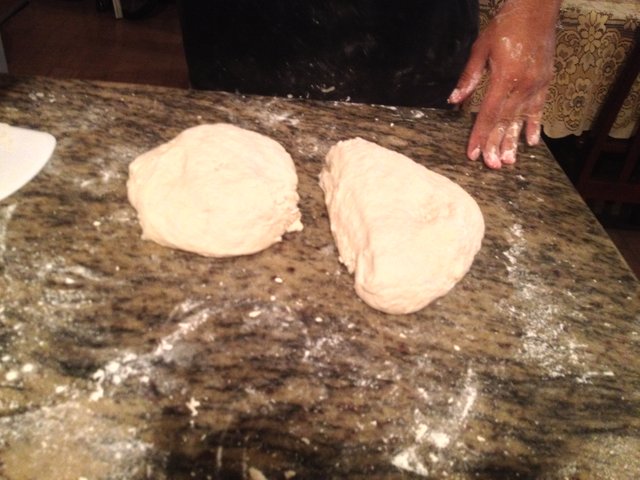
This form is typical when we are going to make high hydration breads, as we see below.
It is about taking the end of the dough and hit it hard against the counter, take and turn, repeat the process as it is in the photos where I show the step by step until the dough is smooth.
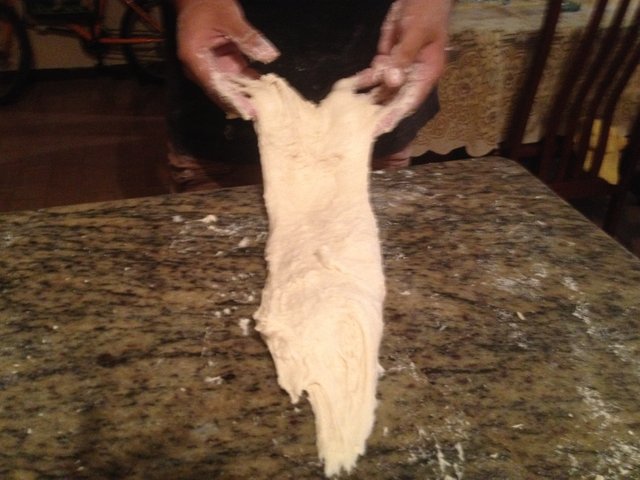
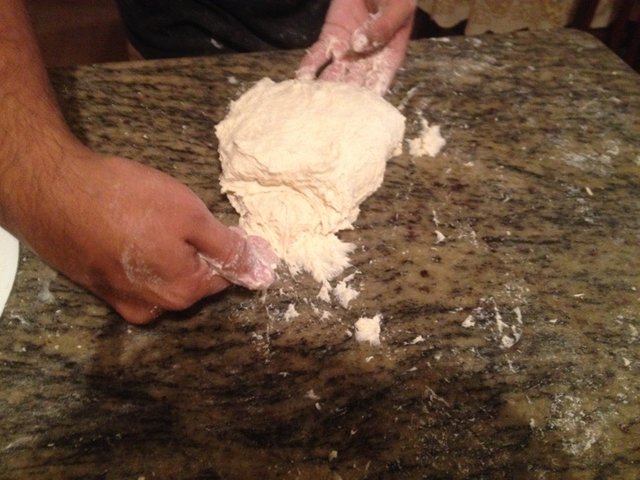
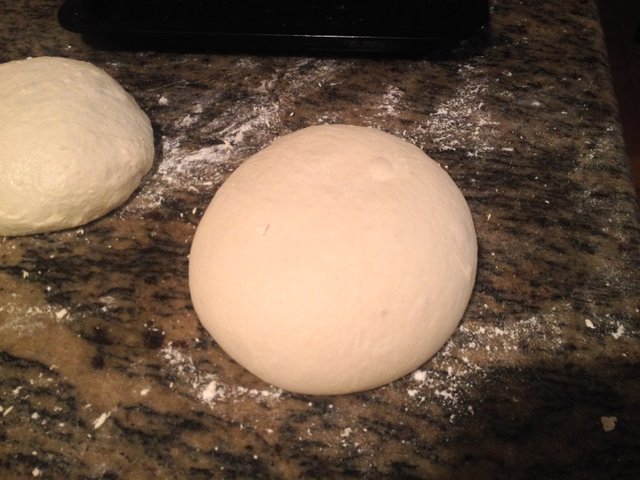
Now take to the tray, take oil and greased before placing the dough.
Stretch with the fingertips across the tray and let stand 3-4 hours.
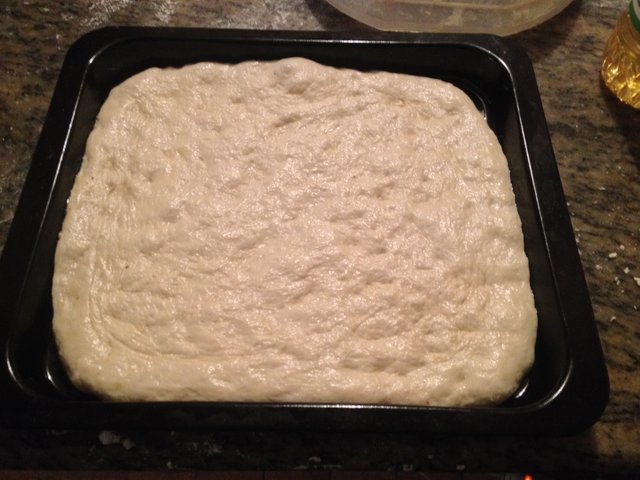
After 4 hours, add ripe tomatoes and introduce them into the whole dough.
Then we take Napoli sauce, pour over the Focaccia add coarse salt and direct to the oven at 220 ° C for 20 min.
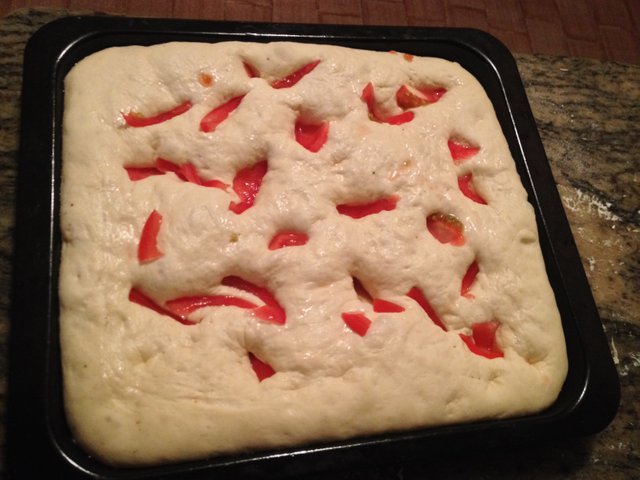
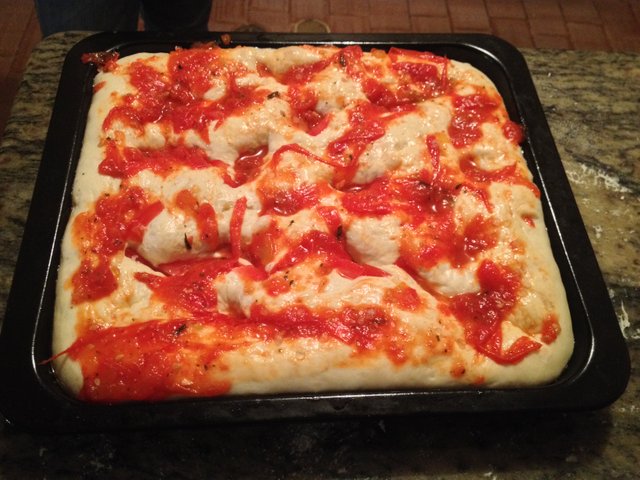
When coming out of the oven, we unmold, cut into pieces and so these alveoli are seen.
It has an incredible aroma and exceptional softness.
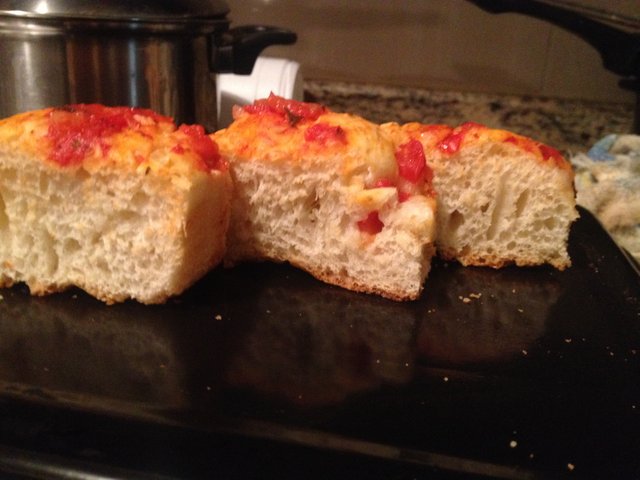
This was my recipe for Focaccia, my version of a Focaccia. I accept doubts and suggestions.
Please support @albertocotua in all his efforts to bring content to Steem.

This is posted on steemkitchen.com - Featuring the greatest recipes and food blogs posted by members of SteemKitchen On the STEEM Blockchain
View on Steemkitchen
contact us on Discord
We will know what the exact measurements are, with our technical sheet.
Personally I do not like the taste of olive oil, so this formula designed by me contains Margarine instead of Olive oil, if you like it you can add the same amount and in the same order.

If you noticed, this technical sheet is different from the previous ones. In this show the% and the remaining grams of the preparation, that is, remember that the poolish is part of the final mass, so this amount of flour, water and yeast are the remaining of the final mass.
This is the technical sheet with all the total ingredients.

First we add the water that acts as a refresher, softening the acidity of the Poolish.
Then add the flour and the remaining dry ingredients, except the yeast and margarine.
We have a very wet dough, so we do not knead conventionally as we have been doing, we will use a special kneading.
This kneading consists of taking the dough from the bottom of the container, stretching it and placing it on itself, repeat this step in the form of the 4 cardinal points, that is, starting at the north of the container and ending at the west, then cooling.
It is important to remember that for each kneading we must spread the margarine in our hands and thus add it indirectly to the mixture.
After 3 hours, degasify and continue kneading, this time with the dough a little more uniform (since it has generated structure) in the well-floured counter.
We repeat this process every hour.
When we have a uniform dough, we separate and continue kneading in another way so that it generates the necessary gluten.
This form is typical when we are going to make high hydration breads, as we see below.
It is about taking the end of the dough and hit it hard against the counter, take and turn, repeat the process as it is in the photos where I show the step by step until the dough is smooth.
Now take to the tray, take oil and greased before placing the dough.
Stretch with the fingertips across the tray and let stand 3-4 hours.
After 4 hours, add ripe tomatoes and introduce them into the whole dough.
Then we take Napoli sauce, pour over the Focaccia add coarse salt and direct to the oven at 220 ° C for 20 min.
When coming out of the oven, we unmold, cut into pieces and so these alveoli are seen.
It has an incredible aroma and exceptional softness.
This was my recipe for Focaccia, my version of a Focaccia. I accept doubts and suggestions.
Please support @albertocotua in all his efforts to bring content to Steem.

This is posted on steemkitchen.com - Featuring the greatest recipes and food blogs posted by members of SteemKitchen On the STEEM Blockchain
View on Steemkitchen
contact us on Discord
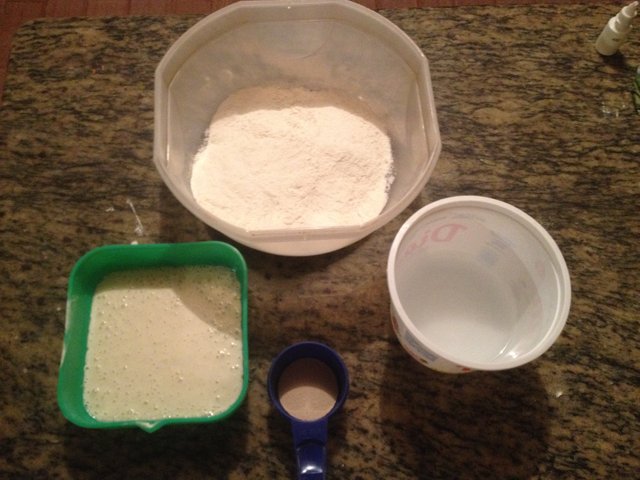
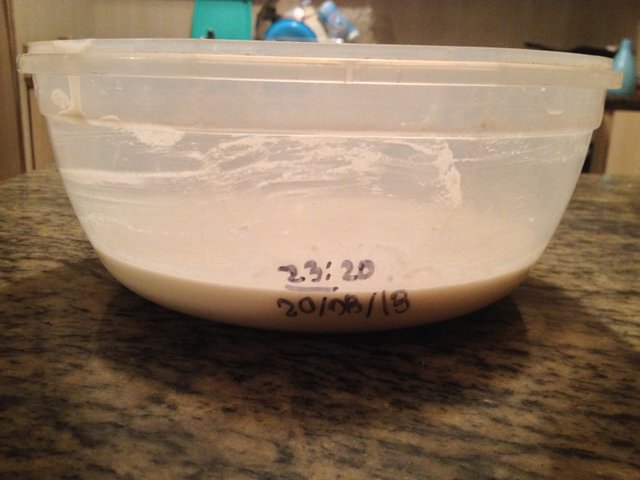
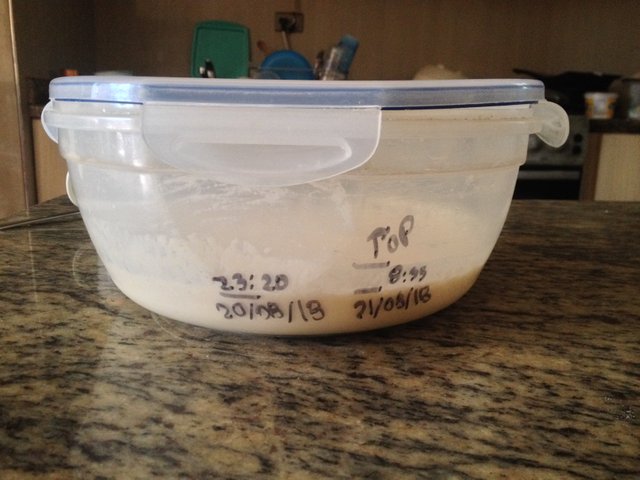
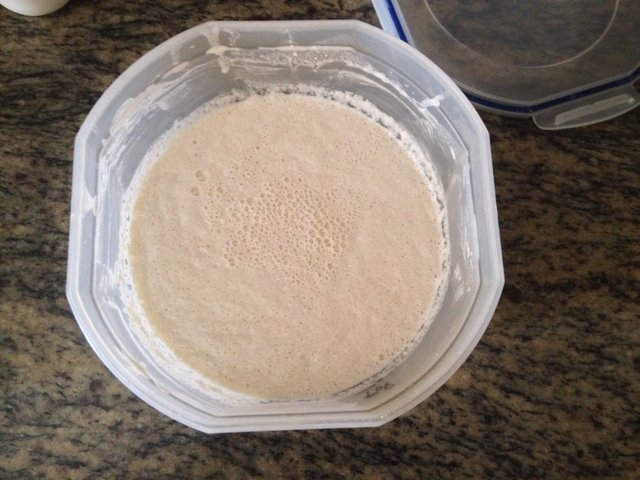

Focaccia bread is such a great and simple lunch, thanks for sharing. Going to have to try this one day😺
You have received an upvote from cooggerup and all the users that have joined the trail with you that has available upvote power.
For more information about coogger
Coogger Ecosystem settings and How can I join cooggerup curation trail.
Please follow curation trail with steeauto account or join the cooggerup bot in the settings on coogger.com or other community web site like steemkitcen.com for more support from Coogger Ecosystem.
Thank you for supporting steemkitchen community that is part of the Coogger Ecosystem.